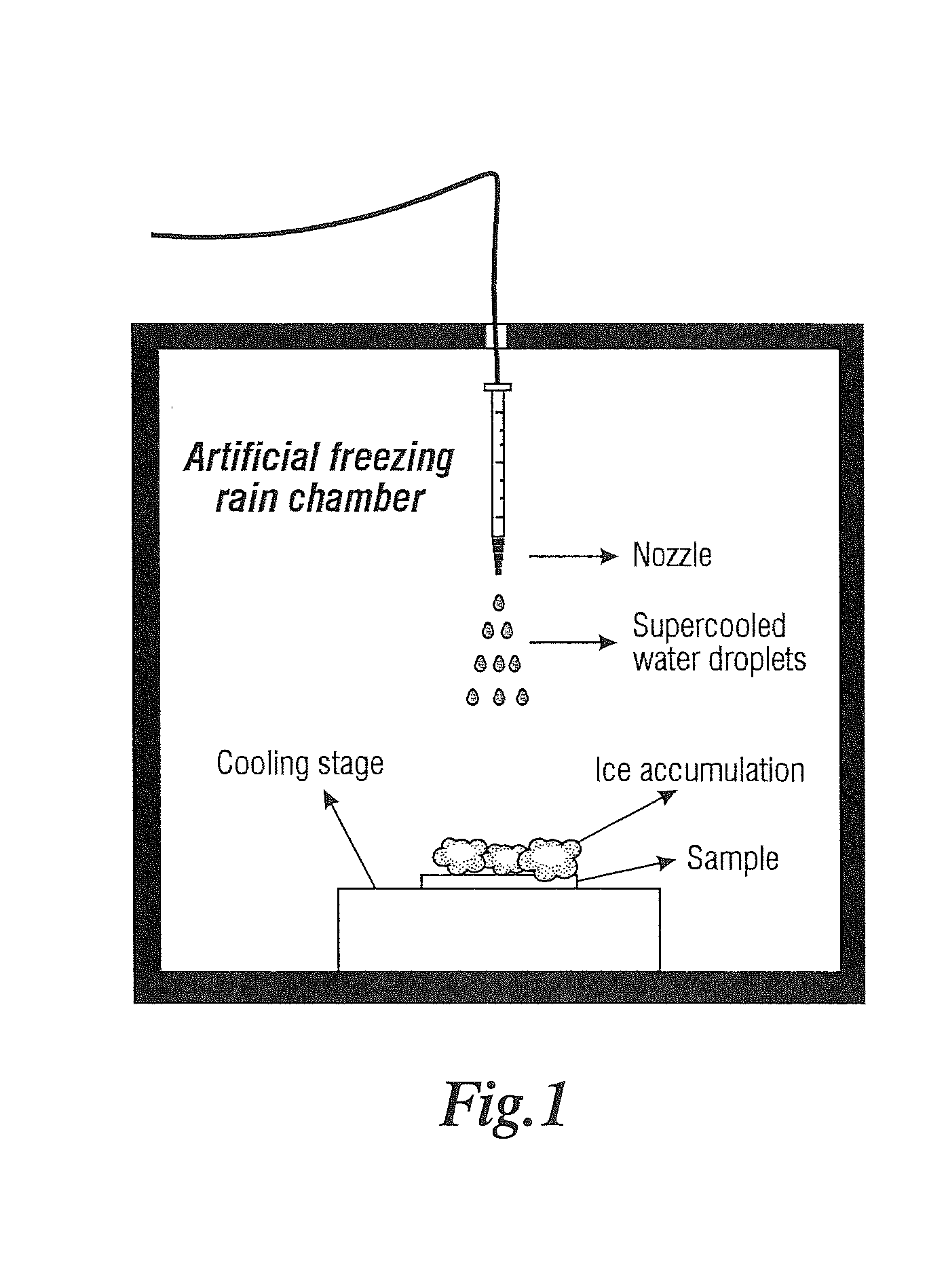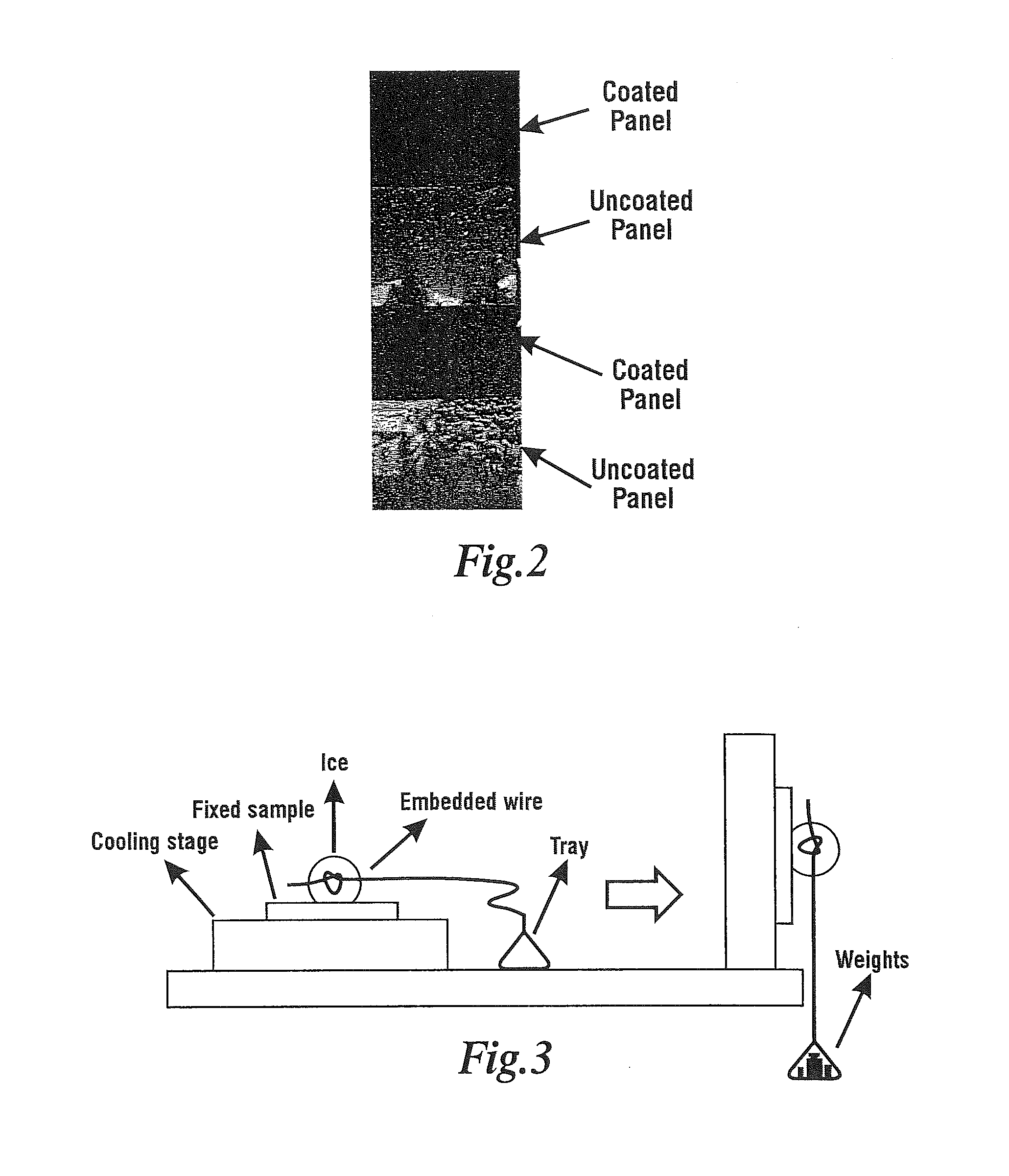Compositions for prevention of ice build-up
a technology of compositions and ice, applied in the direction of coatings, other chemical processes, chemistry apparatuses and processes, etc., can solve the problems of ice slipping off the coating, etc., and achieve the effect of extremely low adhesion strength between ice and the substra
- Summary
- Abstract
- Description
- Claims
- Application Information
AI Technical Summary
Benefits of technology
Problems solved by technology
Method used
Image
Examples
examples
[0046]The following examples are intended to illustrate the present disclosure and should not be construed as limiting the present disclosure in any way.
example i
[0047]An ice release coatings was made by the following procedure. 100 parts by weight of hydroxy-terminated polydimethylsiloxane (viscosity: ˜750 cP, Sigma-Aldrich), 200 parts by weight of fluorosilicone oil with a viscosity of ˜300 cP at 25° C. (Mw: ˜120,000, Sigma-Aldrich), 10 parts by weight of methyltris(2-methoxyethoxy)silane (Sigma-Aldrich), and 0.1 parts by weight of Dabco® T-12 catalyst (Air Products & Chemicals) were mixed together at room temperature and degassed. The coating was applied to aluminum panels by a spray gun or by brush.
example ii
[0048]The aluminum panels coated in Example I were placed in an artificial freezing rain chamber (FIG. 1) with uncoated aluminum panels. Both the coated and uncoated panels were exposed to a fine vertical water spray equivalent to freezing drizzle. The temperature of the chamber was kept at −20° C. Water was introduced into the nozzle at about 2° C., which was about 1.8 m above the aluminum panel. The panel was tilted at about 20° to the horizontal for ice to slip off by gravity. FIG. 2 shows an optical image of 2 coated and 2 uncoated aluminum panels after being exposed to simulated freezing rain for 30 min. It was observed that the uncoated panels were covered by a thick layer of ice, while the coated panels had little ice on the surface-only ice islands at the bottom edge of the coated panels were observed which appeared to be in the process of slipping off the surface.
[0049]The amount of ice accumulated on the coated and uncoated panels was determined from the difference in weig...
PUM
| Property | Measurement | Unit |
|---|---|---|
| weight ratio | aaaaa | aaaaa |
| weight ratio | aaaaa | aaaaa |
| viscosity | aaaaa | aaaaa |
Abstract
Description
Claims
Application Information
 Login to View More
Login to View More - R&D
- Intellectual Property
- Life Sciences
- Materials
- Tech Scout
- Unparalleled Data Quality
- Higher Quality Content
- 60% Fewer Hallucinations
Browse by: Latest US Patents, China's latest patents, Technical Efficacy Thesaurus, Application Domain, Technology Topic, Popular Technical Reports.
© 2025 PatSnap. All rights reserved.Legal|Privacy policy|Modern Slavery Act Transparency Statement|Sitemap|About US| Contact US: help@patsnap.com



